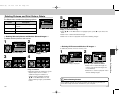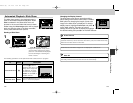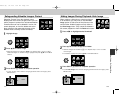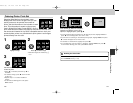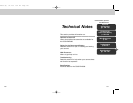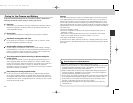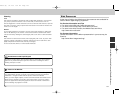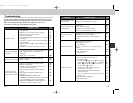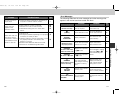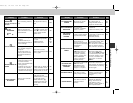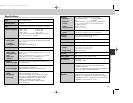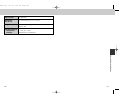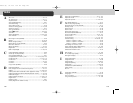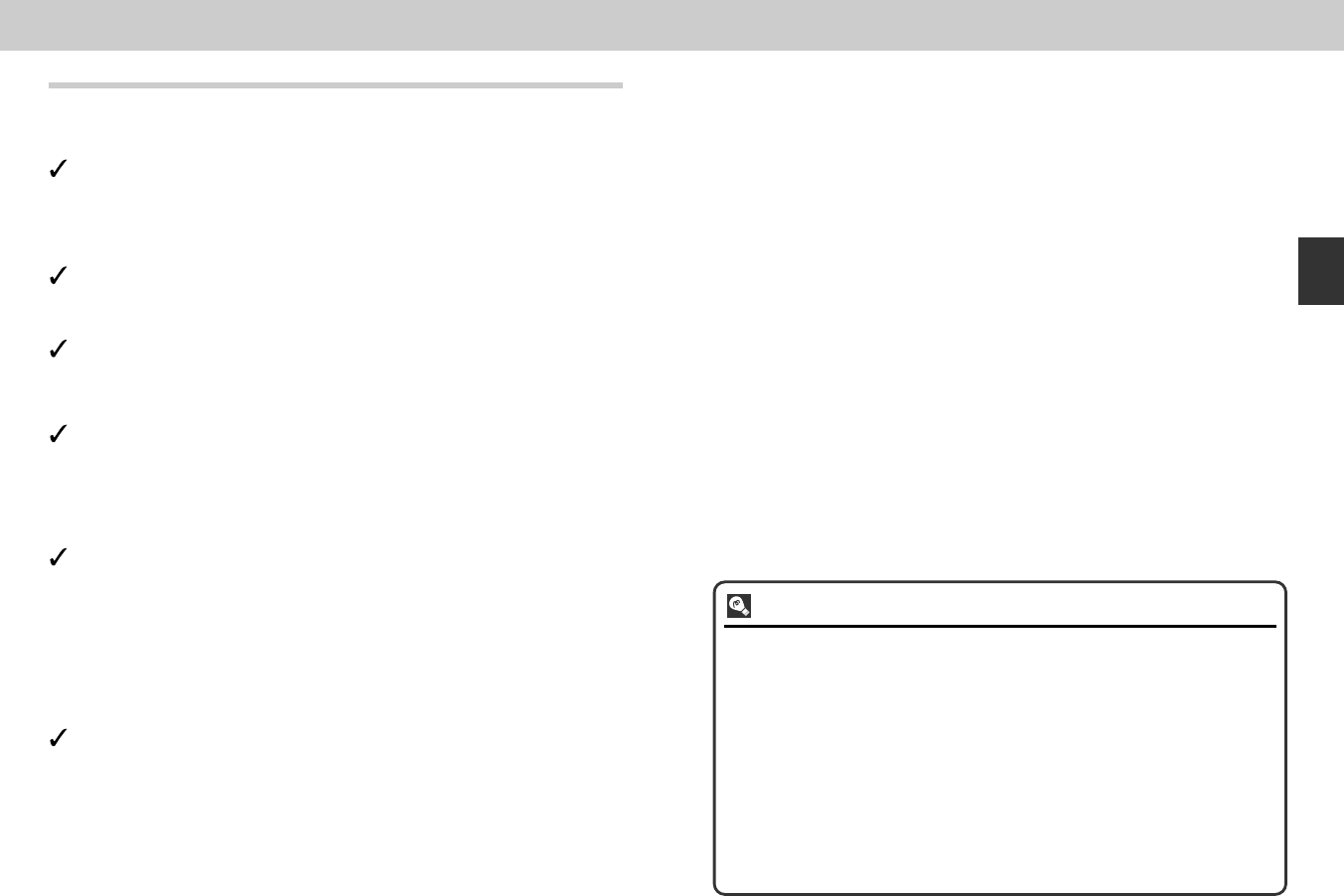
135134
Technical Notes—Caring for the Camera and Battery
Storage
When the camera will not be used for an extended period, return the lens section
to its original position and remove the battery and store it in a cool, dry place. To
prevent mold or mildew, store the camera in a dry, well-ventilated area. For long-
term storage, place the camera in a plastic bag containing a desiccant (note that
desiccant gradually loses its capacity to absorb moisture and should be replaced at
regular intervals). Do not store your camera with naphtha or camphor moth balls or
in locations that:
• are poorly ventilated or damp
• are next to equipment that produces strong electromagnetic fields, such as
televisions or radios
• are exposed to temperatures above 50°C/122°F (for example, near a space
heater or in a closed vehicle on a hot day) or below –10°C (14°F)
• are subject to humidities of over 60%
To prevent mold or mildew, take the camera out of storage at least once a month.
Turn the camera on and release the shutter a few times before putting the camera
away again.
Caring for the Camera and Battery
To ensure continued enjoyment of your Nikon Product, observe the
following precautions when using or storing the device:
Keep dry
This product is not waterproof, and may malfunction if immersed in water or
exposed to high levels of humidity. Rusting of the internal mechanism can
cause irreparable damage.
Do not drop
The product may malfunction if subjected to strong shocks or vibration.
Handle all moving parts with care
Do not apply force to the lens or to the battery, card, or connector. These
parts are especially susceptible to damage.
Avoid sudden changes in temperature
Sudden changes in temperature, such as occur when entering or leaving a
heated building on a cold day, can cause condensation inside the device. To
prevent condensation, place the device in a carrying case or a plastic bag
before exposing it to sudden changes in temperature.
Turn the product off before removing or disconnecting the
power source
Do not unplug the product or remove the battery while the product is on, or
while images are being recorded or deleted from memory. Forcibly cutting
power to the product in these circumstances could result in loss of data or in
damage to the internal circuitry or memory. To prevent an accidental
interruption of power, avoid carrying the product from one location to another
while the AC adapter is connected.
Keep away from strong magnetic fields
Do not use or store this device in the vicinity of equipment that generates
strong electromagnetic radiation or magnetic fields. Strong static charges or
the magnetic fields produced by equipment such as radio transmitters could
interfere with the monitor, damage data stored on the memory card, or affect
the product’s internal circuitry.
Hints and Tips for Handling Batteries
Some tips to ensure that your camera is always ready to shoot:
• When you turn the camera on, check the battery-level displayed in the monitor
to determine whether the battery needs to be replaced. A warning will be
displayed when the battery needs to be replaced.
• Ready a spare battery and keep it fully charged when taking photographs on
important occasions. Depending on your location, you may find it difficult to
purchase replacement batteries on short notice.
• On cold days, the capacity of batteries tends to decrease. Be sure the battery
is fully charged before taking photographs outside in cold weather. Keep a
spare battery in a warm place and exchange the two as necessary. Once
warmed, a cold battery may recover some of its charge.
• Should the battery terminals become dirty, wipe them off with a clean, dry
cloth before use.
E4300 (E) 02.12.9 1:47 PM Page 134



